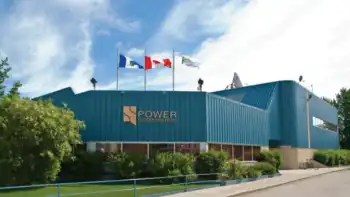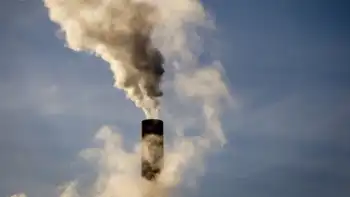Work on 132 MW combined cycle plant begins
ABOADZE, GHANA - Vice President John Dramani Mahama cut the sod to begin work for an additional 132 megawatts combined cycle power plant at the Thermal Power Station at Aboadze near Takoradi.
The Vice President, who was assisted by Nana Kweku Binnah III, Omanhene of Shama Traditional Area Mahama, to perform the ceremony, said the contract for the project was estimated at (US) $185,359,651 and it was being financed with a loan from the Government of Canada and the Societe General of Canada and Investment Bank.
He said the government wanted to improve thermal power supply from its present 2,000 megawatts to 5,000 megawatts by 2015 to support the country's socio-economic development.
Vice President Mahama said government alone could not achieve this target with its own resources and would welcome private sector participation in the development of the country's electricity base to make energy available for domestic and industrial use.
He said the government has formulated a transparent framework within which private investors could operate and this was available at the Energy Commission.
Vice President Mahama said the government was considering means of correcting disparities in regional distribution of energy through the National Electrification Scheme.
He said the National Energy Accessibility Rate was 67 per cent and the Western Regional Energy Accessibility Rate, which was 50 per cent was below the national average.
Vice President Mahama said the government was endeavouring to improve the national rate and within the next three years, about 1,000 communities including communities in the Western Region would be provided with electricity.
He said government would construct hydro projects at various parts of the country in addition to the Bui Dam which was under construction to add 400 MW capacity to the existing power generation capacity.
Dr Kwabena Donkor, Deputy Minister of Energy, said the low electricity price regime based on reliable and cheap hydro-generation must be regarded as a thing of the past if the country was to improve on the availability, reliability and security of power supply for industrial and domestic use.
He said in the 1960s and 1970s, when power generation in the country was mainly from the Akosombo Dam, the country was able to produce and sell power for domestic and industrial use at very low prices.
Dr. Donkor said currently, there was a generation mix with about 50 per cent from thermal generation sources, using expensive crude oil and expensive diesel fuel with serious implications for cost of electricity generation and pricing.
He said: "The current generation mix throws up a production cost that is reflective of today's crude oil pricing that has hovered in the 80 United States dollars band for the last couple of months".
Dr. Donkor said the gravity of power sector generation challenge was exacerbated by the obsolescence of transmission and distribution infrastructure.
He said transformers and associated equipment manufactured and installed in the early 1950s still formed the backbone of transmission and distribution infrastructure.
Dr. Donkor said the nation under invested in the power sector after the 1960s, especially in transmission and distribution equipment and systems.
He said the transmission system was undergoing reinforcement to improve reliability and reduce vulnerability of the network, expand capacity network to support load growth and modernize the entire transmission network to meet internationally accepted standards of operation.
Dr. Donkor said the people have to collectively confront the high losses experienced in the distribution chain and while increased investment would reduce technical losses, the theft of power through illegal connections culminating in commercial losses must be addressed.
He called on security agencies, community groups and patriotic minded individuals to help to bring this under control by arresting and reporting the perpetuators who live in their communities.
Dr. Donkor said such commercial losses added to individual bills of consumers and it was, therefore, in their interest to help arrest this situation.
Mr. Kweku Andoh Awotwi, Chief Chief of the Volta River Authority (VRA), said the plant would consist of four gas turbines, four heat-recovery stream generator and two steam turbines.
He said the gas turbines would run on light crude oil, diesel oil and natural gas and the main contractor for the expansion project was the Canadian Commercial Corporation.
Mr Awotwi said the VRA remained committed to fulfilling its mandate of supplying electricity for socio-economic development in the country and the West Africa Sub-region.
He said the Takoradi Thermal Power Project, undertaken by the VRA, to supplement hydro sources of generation at Akosombo and Kpong, has contributed to achieving its corporate goal of ensuring efficient and reliable power supply.
Mr Derren Schemmer, Canadian High Commission in Ghana, said Ghana was the first country in the sub-region to benefit from his country's economic assistance.
He said many Canadian companies wanted to do business in the country because of the government's good policies and good governance.
Related News

N.W.T. green energy advocate urges using more electricity for heat
HAY RIVER - A Northwest Territories green energy advocate says there's an obvious way to expand demand for electricity in the territory's South Slave region without relying on new mining developments — direct it toward heating.
One of the reasons the N.W.T. has always had some of the highest electricity rates in Canada is that a small number of people have to shoulder the huge costs of hydro facilities and power plants.
But some observers point out that residents consume as much energy for heat as they do for conventional uses of electricity, such as lighting and powering appliances. Right now almost…




